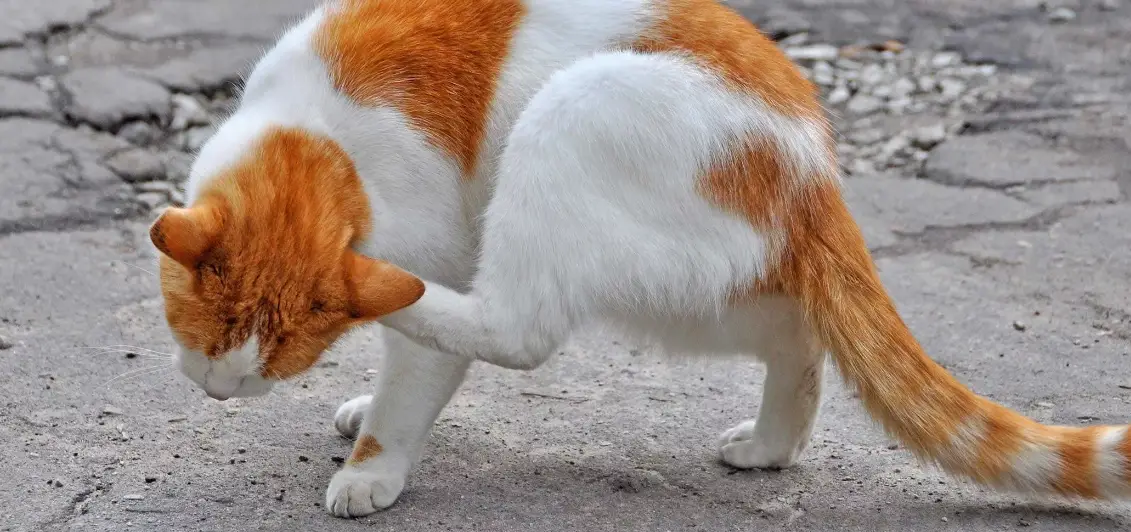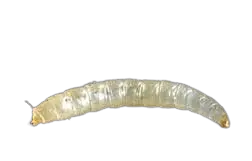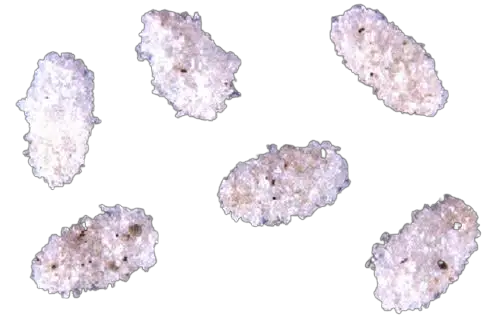Cat fleas have a life cycle that passes through 4 different growth stages: flea eggs hatch into larvae, which then build a cocoon and turn into adult fleas ready to lay eggs in turn just 48 hours after first biting your cat.
To break the cat flea life cycle, you’ll need to fight these parasites at every stage of their life because wherever you find fleas, you’re likely to find their eggs, larvae, and pupae, ready to re-launch the infestation if you don’t get rid of them too, and affect your cat or other pet.

In ideal conditions, a flea’s life cycle lasts an average of 21 days (or several months if conditions are bad for the flea).
This helps us to understand that we need to keep fighting this parasite for at least 30 days to be able to completely eliminate it from our home and save our cat from fleas. By the way, there’s a natural way to treat your cat for fleas but it won’t show instant results as when you use these chemical products.
Here are the 4 different stages of flea development and how to get rid of them at each of these stages:
1- Flea egg (50% of the flea population)
Flea eggs will begin to be laid in your cat’s fur or even in its immediate environment, such as its bedding, within 2 to 10 days of its first blood meal.
Only Flea treatments like Advantage 2 which contain an insect growth regulator like Methoprene and Pyriproxyfen … can destroy these eggs by preventing egg-hatch and preventing flea larvae from becoming adults which then kills them.
These IGRs are safe for pets and humans and their effect can last up to 7 months.
Washing your cat’s bedding in hot water can also eliminate them.
2- Flea larvae (35% of the flea population)
After 1 to 10 days, flea eggs will hatch into flea larvae, which will start feeding on flea dirt and other organic waste, either on your cat’s back, on the floor, or in its bedding.
Depending on the conditions and the abundance of food, these flea larvae will weave a cocoon from 5 to 20 days after hatching and enter the pupae stage.
Flea larvae can also be destroyed with flea medicine containing IGRs and with hot water or steam.




3- Flea pupae (10% of the flea population)
Once the flea larva has surrounded itself with a cocoon generally made of flea dirt and hair … it will finish metamorphosing into a flea in just 7 to 19 days after the cocoon has been built.
But once it has metamorphosed into an adult flea, it can remain in the cocoon for up to 5 months, waiting for the right conditions to emerge, as if sensing the presence of a potential host, notably your cat.
During this stage of development, the pupa is very difficult to destroy as it is completely isolated from the outside environment, especially from insecticides.
That’s why you need to use a vacuum cleaner to pick up as many pupae as possible, and to continue treating your home against fleas for at least 2 weeks to make sure you get rid of them once they’ve all emerged from their cocoons.
4- Adult fleas (less than 5% of the flea population)
Once a flea has reached adulthood and has left its cocoon, it will start to look for a host and use its powerful hind legs to jump onto it and embed itself in its fur.
She will then start to feed on his blood and lay up to 50 eggs a day, thus restarting the flea life cycle.
Adult fleas can live up to 100 days if they find food and if the temperature and humidity conditions are ideal, with temperatures between 46.4°F (8°C) and 95°F (35°C) and a humidity level of 70%.
Fleas can die on their own if they don’t find food for several days.
Adult fleas can also be eliminated with any flea medicine, or with a mixture of water and soap once removed with a flea comb.
How to get rid of fleas during the whole cycle?
Here’s how to quickly get rid of fleas from your cat and its surroundings:
- Start by giving your cat a flea treatment, preferably a Topical one (Advantage 2).
- Then clean all his things, his bedding, his toys … with hot water, let them dry, and disinfect them with a flea spray or a natural repellent.
- Also, wash all your sheets at high temperatures
- Vacuum the whole house, concentrating on the places your cat frequents most.
- Then use flea spray throughout the house, not forgetting damp, dark corners and under sofa cushions …etc.
- Then disinfect your balconies and backyard.
- Repeat this operation every week for a whole month.
- After 30 days, don’t forget to flea-treat your cat again.
Final Thoughts
It’s the flea’s life cycle that makes it such a difficult enemy to defeat, so you’ll need to target this little parasite at every stage of its development and, above all, continue with preventive treatments if you hope to get rid of it, or at least avoid an infestation of your home and pets.


